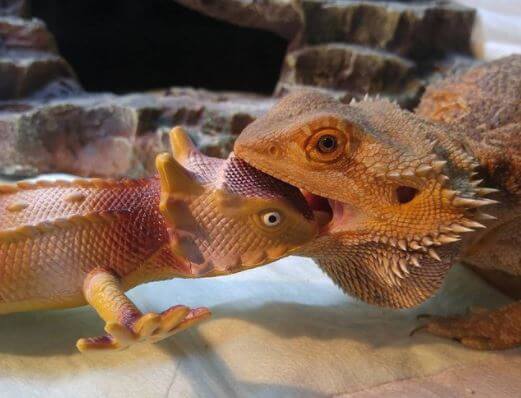As the owner of the reptile, I sometimes wonder what bearded dragons predators are.
What happens if I put him back to his original place, an arid and hot desert in Australia where the lack of water is too often and regular?
There might be a chance that those domestic animals can not be alive in a few days, not because of starvation but the hungry killers.
After a few pieces of research, I was surprised that my pets might not only be threatened in nature.
There are also some other kinds of killers that are too near them in the house.
Are you wondering who they are?
Scroll down for the full detail!
Related Posts:
- Bearded Dragon Throwing Up Clear Liquid: What Should You Do?
- Bearded Dragon Sleeping in Water Dish: What You Should Know
- Do Bearded Dragons Sleep Standing Up? Sleeping Habits
- Can I Put My Bearded Dragon in a Hamster Ball?
Why Should You Know About Bearded Dragons Predators?
You are the owner of one or many beardies. It is crucial to know about those threats, including their predators.
If not, how could you know when to pay attention because your pet is in danger?
Besides, having a deeper insight into the killers will help you protect your beloved friend better.
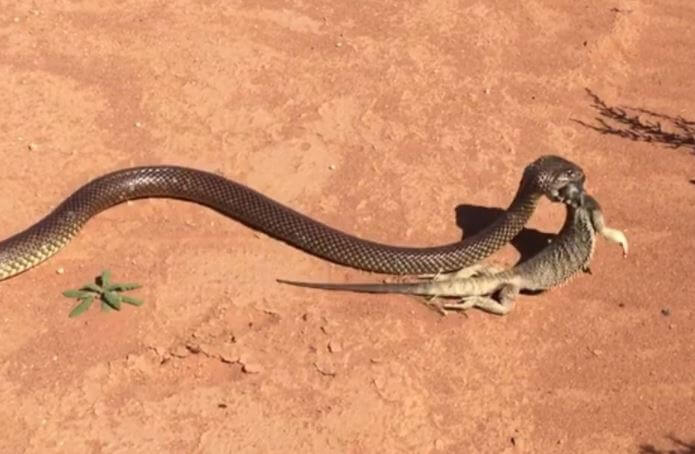
For example, you intend to take care of another pet like a cat or larger animal beside a bearded dragon. How could you know if those new friends would not attack your old pet and turn him into a meal?
You need to know the different kinds of bearded dragons predators, even if your little pet is in your “seemingly” safe house.
What Are Bearded Dragons Predators?
Beardies have a lot of natural predators.
Snakes and lizards are the most common threats against any bearded dragon in the wild. Plus, birds of prey, dingoes, and foxes can also eat those dragons as a delicious meal.
For those who don’t know, even the tiny house cats prey on the beardie.
1. Snakes
There are various types of snakes in Australia who like to eat a bearded dragon. For this reason, you might not want to put a snake near your beardie.
Both can eat smaller creatures than them. So, a giant snake can digest a weaker dragon.
Some popular snakes you can find in Australia include coral snakes, death adders, and eastern brown snakes.
When visiting the country of kangaroos, you might be lucky (or unlucky) to see the fastest and the most venomous snakes. They are everywhere! Australian snakes often catch a bearded dragon quickly.
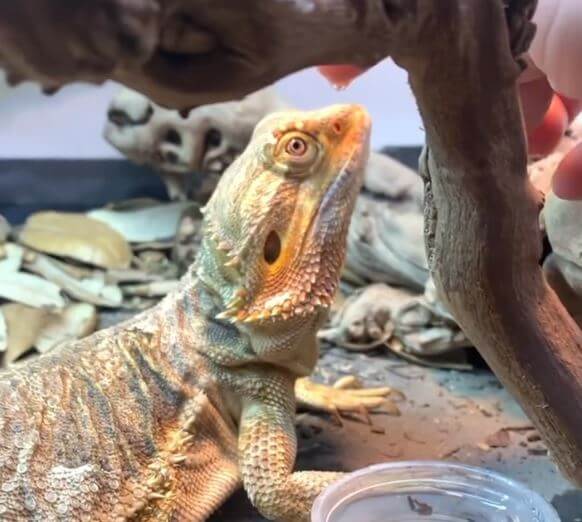
Some people asked how a snake with such a small mouth can eat a larger beardie. The reason is because of the snake’s body structure.
Unlike human beings, their bottom jaw can be dislocated or detached easily. Once the snake finds the prey, he would quickly and quietly come near to them.
After deadly strikes, the snake could choose between using its venom or constricting the animal. Once the preys are under control, the snake would stretch its large mouth and cover their body.
The poor animal would go through his digestive tract with the muscles working at the total capacity.
Let’s take a look at this video to see how a snake eats a beardie:
2. Some Large Lizards
Goannas and other monitor lizards are also my answers to the question, “What are bearded dragons predators?”
For instance, goannas are native animals in Australia. They are deadly lizards with impressive speed as well as a large size. Plus, they can eat or catch the beardies without any difficulties.
The lizard is also the predator of many other small mammals and reptiles, birds, and insects.
Consequently, you should not bring a goanna, snake, or other beardies to your home.
However, if you still insist on doing that, bear in mind to keep them contained and separately. If not, before you know it, they might have already eaten each other because they can.
3. House Cats
In Australia, especially in suburban areas, many pests like beardies harass or damage crops and property. To tackle the problem, residents have raised house cats for a long time.
Additionally, house cats often feature long and sharp teeth and claws. They are fast and competent as well. They also like to climb and hide in tight places where most other animals can not.
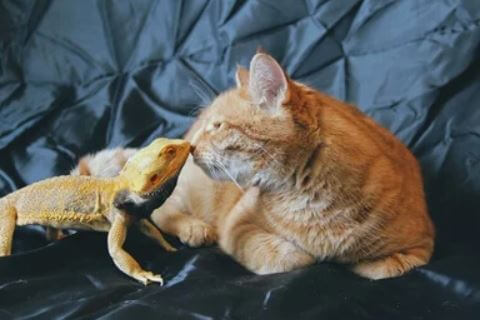
That is all they need to catch any beardie. If you care for both the house cat and the dragon, never forget to keep them separate. Invest in a secure lid for your weaker bearded dragon as well. That protection should be strong enough so that the cat can not knock off or open.
However, what if you live in a suburban area in Australia? Buying a house cat is my recommendation. The fast animal would protect your house and garden from any unexpected bearded dragon.
4. Birds of Prey
According to many scientific studies, birds of prey are one of the most dangerous predators of beardies and other reptiles.
The fact has its roots in their solid bills and large paws. You might not understand how strong and quick they are before you can witness them directly. With extra sharp eyes and a powerful hunting instinct, rarely is any beardie able to escape from them.
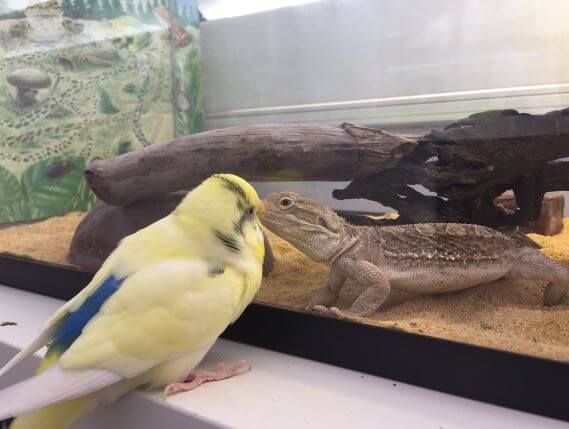
To turn the animal into a meal, those raptors often start with high flights. The action’s purpose is to notice the prey and prevent him from detaching the hunter.
After he is sure, he would dive fast with the grace of moving. The powerful bills and massive talons would rapidly grab the food and tear it into pieces.
Furthermore, birds of prey not only live in Australia. They are in all four corners of the earth. So, please keep a close watch on your pet whenever you take him outside. Plus, notice any strange flying things overhead.
There might be a chance those are the deadly birds of prey, and they can attach your little pet any time they want.
5. Dingoes and Foxes
Last but not least are foxes and dingoes.
A bearded dragon is intelligent and fast. That is the reason why any of their predators has to be clever and quick, too. So, you might not want to ignore foxes and dingoes. Both of them are native to Australia.
Few animals are not scared of them. With their sharp teeth, deadly claws, and strong jaw, those large creatures can catch, eat, and kill most Australian wildlife residents.
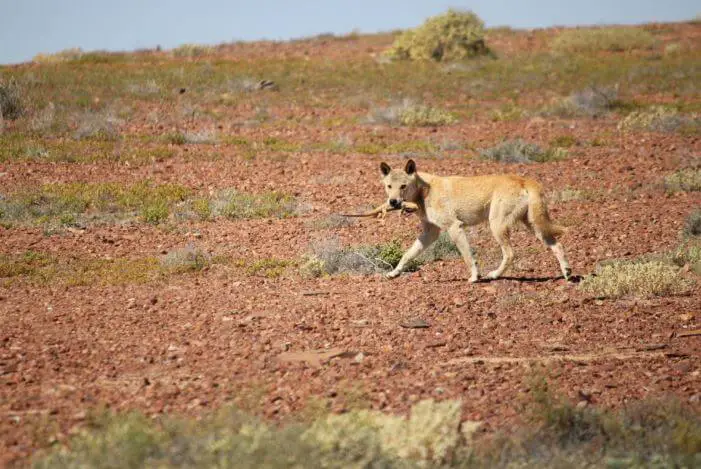
Foxes are a kind of feline. They can move in packs or alone. By contrast, dingoes are medium-sized dogs featuring a hardy and lean body. You never see them running alone while hunting.
While foxes are relatively common in most places in the world, dingoes mostly live in Australia. As a result, you should be worried if you take your beardie outside or alone. Any fox can turn him into a quick meal at any time.
How Do Bearded Dragons Defend Themselves?
To self-protect against those predators, beardies have their techniques. They include the third eye, camouflage, throat and spikes inflation, changing colors, and running.
1. The Third Eye
One of the most exciting things I found in beardies is their remarkable third eye. Unlike the other two usual eyes, the third one is lying at the back of the head.
Its purpose is not for seeing. It detects the change in temperature, shadow, and light overhead.
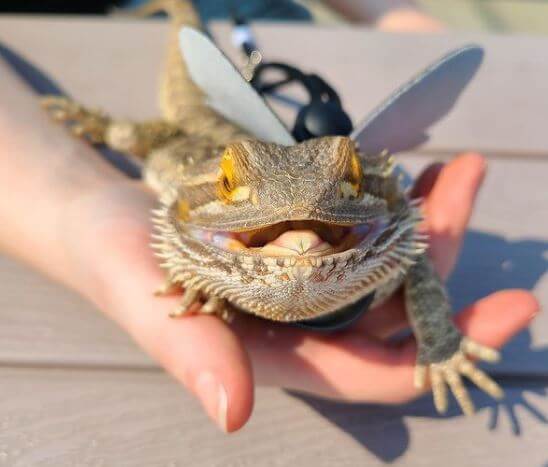
For this reason, beardies can recognize flying predators such as birds of prey when they approach.
Once the third eye discovers any unusual movements, beardies are alerted. They would run as quickly as they can or do other necessary defensive actions.
2. Changing Colors
Changing skin color is an effective camouflage technique.
Whenever a bearded dragon notices the danger or wants to hide, he often changes his skin hue to a similar tone to the surroundings.
Of course, that capability might not be as good as the chameleons’. But some predators of bearded dragons are often too large to notice the small details.
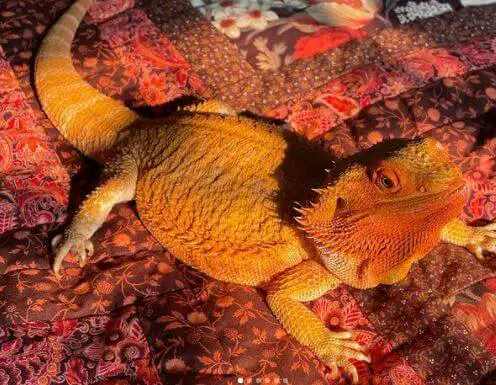
For instance, in hot areas of the desert sand in Australia, beardies love yellow tones. However, while under the rocks, their outlook might become greyer or darker.
3. Throat and Spikes Inflation
There is a famous saying you might know, “The bigger fish eats the smaller one.” The sentence is true in most cases, especially in the wild. The larger you are, the higher the chance you can survive.
Perhaps beardies understand the sentence (or maybe the sentence was inspired by them). Whatever it is, those dragons have been successful in trying to make them bigger.
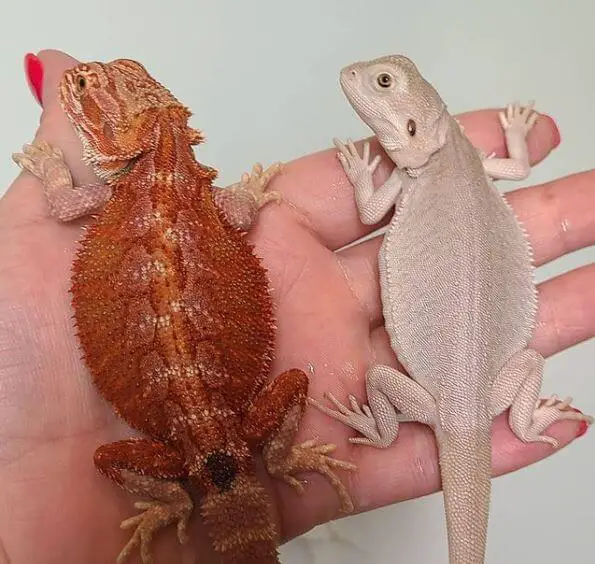
When a beardie senses the near danger, they often inflate their beard and throat with air. To menace the enemy, they raise the spikes alike. As a result, the killer may have to think again about the vast prey.
4. Running
Running is the very first instinct of most animals when they meet a deadly threat. Bearded dragons are not exceptions.
Whenever they notice their natural predators are chasing them, they will run if that is the only option. Often, those beardies depend on the hind legs to run quicker. Their fastest speed is up to 9 miles per hour.
Until the dragon finds a hidden place, they would keep running.
How Do Bearded Dragons Adapt to the Environment?
Besides self-protecting against natural predators, beardies have evolved to face serious challenges and dangers in their environment. Understanding how they try to live for generations is crucial for any bearded dragon owner.
1. Climbing and Digging
Bearded dragons are small animals with large bodies.
To self-protect against the bigger ones, they develop the ability to hide and run. That means they are also excellent climbers and diggers.
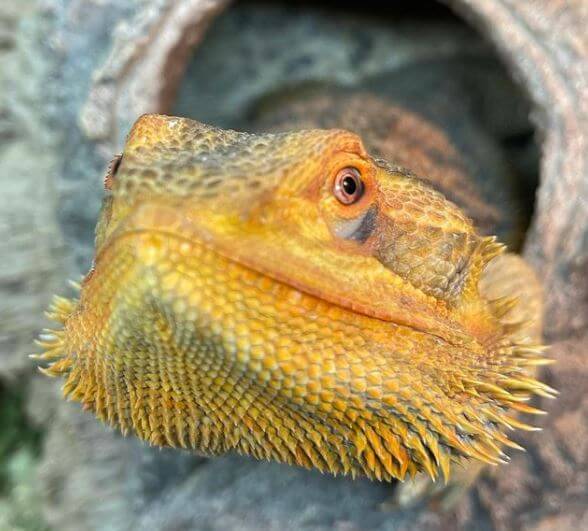
Whenever the temperature decreases or they want to escape from a specific hunter, they climb on high rocks and spots.
On the other hand, if the heat is too high, they could dig burrows to keep cool.
2. Communication and Social Interaction
Whenever a beardie sees another creature, he would show his submission by bobbing their head and waving their hands.
Once you see those signals, you should leave him alone.
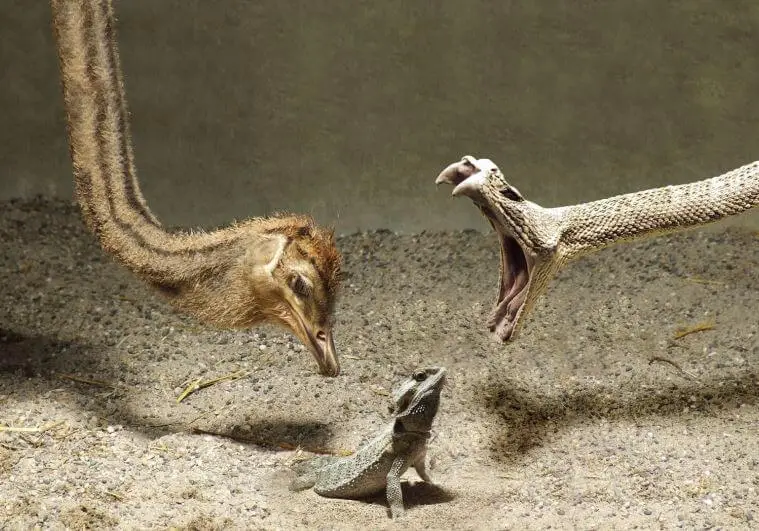
Frequently Asked Questions About Bearded Dragons Predators
1. Do Birds Attack Bearded Dragons?
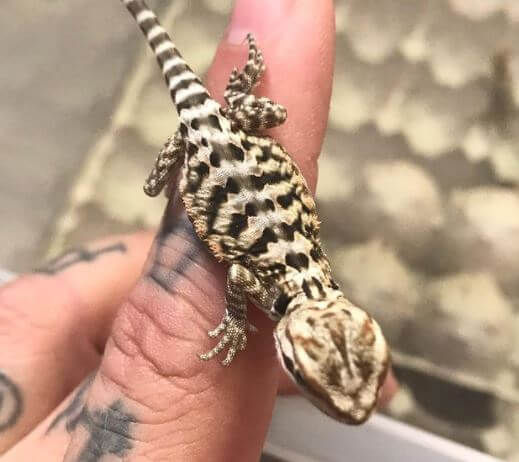
Most birds of prey can kill a bearded dragon. With sharp teeth and strong claws, they can quickly attack any small beardie.
For instance, vultures, hawks, or other desert birds are the natural predators of bearded dragons. Large feline, wolves, snakes, and some vast lizards also can turn your pet into a quick meal.
2. What Can Kill a Bearded Dragon?
Many reasons are leading to the beardie’s death.
It could be the sudden change of temperature (too hot or too cold) and humidity.
Additionally, impaction, infection, parasites, specific diseases, or vitamin toxicity can threaten your pet’s life. When bearded dragons eat toxic bugs or plants by chance, they might die.
More importantly, many beardies die because of natural hunters, such as large house cats, foxes, and others.
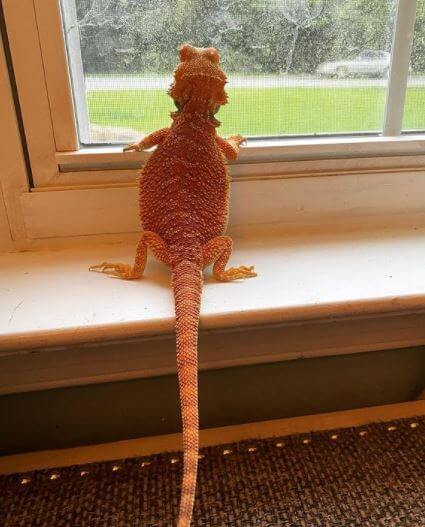
3. Can Bearded Dragons Kill Snakes?
From time to time, wild bearded dragons can kill and eat a small or medium-sized snake. Because they are natural enemies, they will attack each other whenever they have a chance.
Also, the reason why some beardies can eat a snake is because of its strong bites and formidable teeth. They are intelligent alike.
4. Can a Bearded Dragon’s Bite Kill Dogs?
According to some research and studies, the bite can not kill a healthy dog.
Although the edges do involve venom, the amount of the poison is too small to threaten the medium-sized dog’s life.
Of course, if that is a puppy or a sick dog, the problem becomes more serious.
They might have low immune systems. Consequently, some symptoms of allergy are inevitable.
Conclusion
What are bearded dragons predators?
Foxes, dingoes, snakes, some more giant lizards, birds of prey, and house cats are their enemies in the wild.
To protect themselves, they will have some standard techniques such as changing colors, inflating their throat and spikes, and using the third eye. If all of those methods are not enough, they will choose to run.
Key points to remember when thinking of the predators of bearded dragons:
Bearded dragons, like many reptiles, have their share of natural predators in the wild. Understanding these potential threats can help shed light on the evolution of their behaviors and adaptations. Here are some of the key predators of bearded dragons, presented in bullet points for quick reference:
1. Birds of Prey:
- Raptors: Various birds of prey, such as eagles, hawks, and owls, are significant predators of bearded dragons due to their excellent vision and aerial hunting capabilities.
2. Snakes:
- Venomous and Constrictor Snakes: Snakes like king snakes, brown snakes, and some venomous species, may prey on bearded dragons. They often strike swiftly or constrict their prey.
3. Monitor Lizards:
- Larger Lizards: Some monitor lizard species, like goannas in Australia, are known to feed on bearded dragons. Their size and strength give them an advantage.
4. Other Reptiles:
- Predatory Lizards: Smaller predatory lizards in the same habitat may pose a threat to bearded dragons, especially young or juvenile dragons.
5. Small Mammals:
- Carnivorous Rodents: Some carnivorous mammals, like feral cats and rats, can prey on bearded dragons, especially eggs or hatchlings.
6. Invertebrates:
- Large Insects: While less common, large predatory insects like centipedes and mantises may pose a threat to smaller bearded dragons.
7. Feral Animals:
- Introduced Species: In regions where bearded dragons are not native, introduced feral animals like cats and dogs can have a significant impact on local populations.
8. Natural Predation is an Evolutionary Force:
- Selective Pressure: Predation by these natural threats has likely played a role in shaping the defensive and adaptive behaviors of bearded dragons over evolutionary time.
9. Behavioral Strategies:
- Freezing: When confronted by a potential threat, bearded dragons may freeze, relying on their camouflaging abilities to blend into their surroundings.
- Fleeing: When detected by a predator, bearded dragons can make a rapid escape, often utilizing their powerful hind limbs.
- Inflating: Bearded dragons can inflate their bodies, making themselves appear larger and more intimidating to deter potential threats.
- Tail Autotomy: Bearded dragons can shed their tails as a distraction, allowing them to escape while the predator is left with a wriggling tail.
10. Territorial and Solitary Behavior:
- Largely Solitary: Bearded dragons are primarily solitary creatures, which reduces their visibility to predators.
- Territorial Defense: They may also establish and defend territories to minimize encounters with potential threats.
11. Human-Induced Threats:
- Habitat Destruction: Human activities like urban development and agriculture can lead to habitat destruction, resulting in increased human-induced threats to bearded dragons.
12. Captive Safety:
- Protection in Captivity: When kept as pets, bearded dragons are typically safe from their natural predators. However, proper enclosure security is crucial to prevent escapes or accidental exposure to potential threats.
Understanding the natural predators of bearded dragons not only provides insights into their behavior but also emphasizes the importance of their conservation in the face of habitat destruction and other human-induced threats. In captivity, providing a safe and enriched environment is essential for the well-being of these fascinating reptiles.
Further Reading:
- Carolina Custom Cages Terrarium Review
- 8 Best Basking Rocks for Beardie: What Is the Best Choice?
- 10 Best Thermometers for Beardie: How to Choose the Best One?
- 5 Best Beardie Lighting Setups for Beardie Lovers
- 9 Best Heat Lamps for Beardie: Natural Habitat Provided

